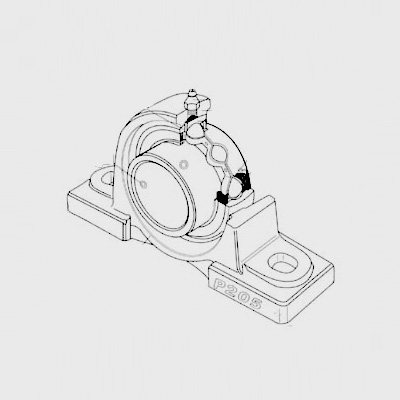
Sep . 28, 2024 18:07 Back to list
thrust roller bearing
Understanding Thrust Roller Bearings Mechanics and Applications
Thrust roller bearings are essential components in various mechanical systems, designed to accommodate axial loads while allowing for limited rotational movement. These bearings play a crucial role in supporting and stabilizing rotating machinery, ensuring smooth operation and extending the lifespan of equipment.
Design and Types
Thrust roller bearings primarily consist of rolling elements (rollers) and races (rings) that facilitate the smooth movement of the rollers. The most common types of thrust roller bearings include cylindrical, spherical, and tapered roller bearings.
1. Cylindrical Thrust Roller Bearings feature straight rollers that allow for high load-carrying capacity and are typically used in applications where the load direction is constant. They are ideal for scenarios involving high-speed operations where axial forces are predominant.
2. Spherical Thrust Roller Bearings have a design that accommodates misalignment and allows for a degree of angular movement. This feature is beneficial in applications where the shaft may not be perfectly aligned with the housing. Spherical bearings help to reduce wear and tear by absorbing misalignments that would otherwise lead to premature failure.
3. Tapered Thrust Roller Bearings consist of tapered rollers and are designed to support heavy axial loads while also enabling significant radial loads. They are prevalent in automotive applications, such as in wheel bearings and gearboxes, where both axial and radial loads exist.
Applications of Thrust Roller Bearings
thrust roller bearing

Thrust roller bearings are utilized across a diverse array of industries due to their robust design and reliability. Common applications include
- Heavy Machinery These bearings are crucial in heavy equipment applications, such as excavators and cranes, where they support substantial axial loads generated during operations. - Automotive Engineering In vehicles, thrust bearings play a pivotal role in manual transmissions, differential gears, and wheel hubs, where they manage the forces generated by acceleration and deceleration. - Aerospace The aerospace industry relies on thrust roller bearings to manage loads in engines and landing gear systems, where both reliability and performance are critical.
Benefits of Thrust Roller Bearings
The advantages of employing thrust roller bearings are numerous. First, they provide high load capacity, making them suitable for demanding applications. Their ability to handle axial loads means that they can support the radial and moment loads, which are vital in many industrial contexts. Furthermore, the design flexibility offered by the various types allows engineers to select suitable bearings tailored to the unique requirements of their applications.
Additionally, thrust roller bearings often have a longer service life compared to other bearing types, resulting in decreased maintenance requirements and reduced downtime. Properly selected and maintained, these bearings can enhance the overall efficiency of machinery, leading to better performance and cost savings.
Conclusion
In conclusion, thrust roller bearings are pivotal components in modern machinery, designed to support axial loads while facilitating smooth rotary motion. Their varied designs and applications across many industries underscore their importance in engineering. As technology advances, the development of thrust roller bearings continues to improve, enabling enhanced performance and reliability in countless applications, ultimately contributing to the efficiency of modern mechanical systems.
Latest news
-
Premium Deep Groove Ball Bearings | High Speed & Reliability
NewsAug.29,2025
-
Durable Scaffolding Clamps - Secure & Reliable Tube Connectors
NewsAug.28,2025
-
Common Failures in Thrust Ball Bearings and Solutions
NewsAug.22,2025
-
How Tapered Roller Bearings Can Take Shock Loads
NewsAug.22,2025
-
Angular Bearings in High-Precision Spindles
NewsAug.22,2025
-
The Impact of Misalignment on Cylindrical Roller Bearing Performance
NewsAug.22,2025
